I encounter quite often this sort of problem in my textbook:
This is a classical non-inverting op-amp. However, I'm always perplexed with resistance R1 between voltage source and non-inverting input. Logically if there is a resistance, then there must be a voltage drop, then the real V(input) must be something like V(source) - V(R1). However, since the current in this branch is equal to 0, then V(R1) = 0. So, what is the point to draw this resistance (or a combination of different resistances which can give one Thévenin equivalent resistance) in numerous exercises? Is there some real world examples where R1 can play some role?
